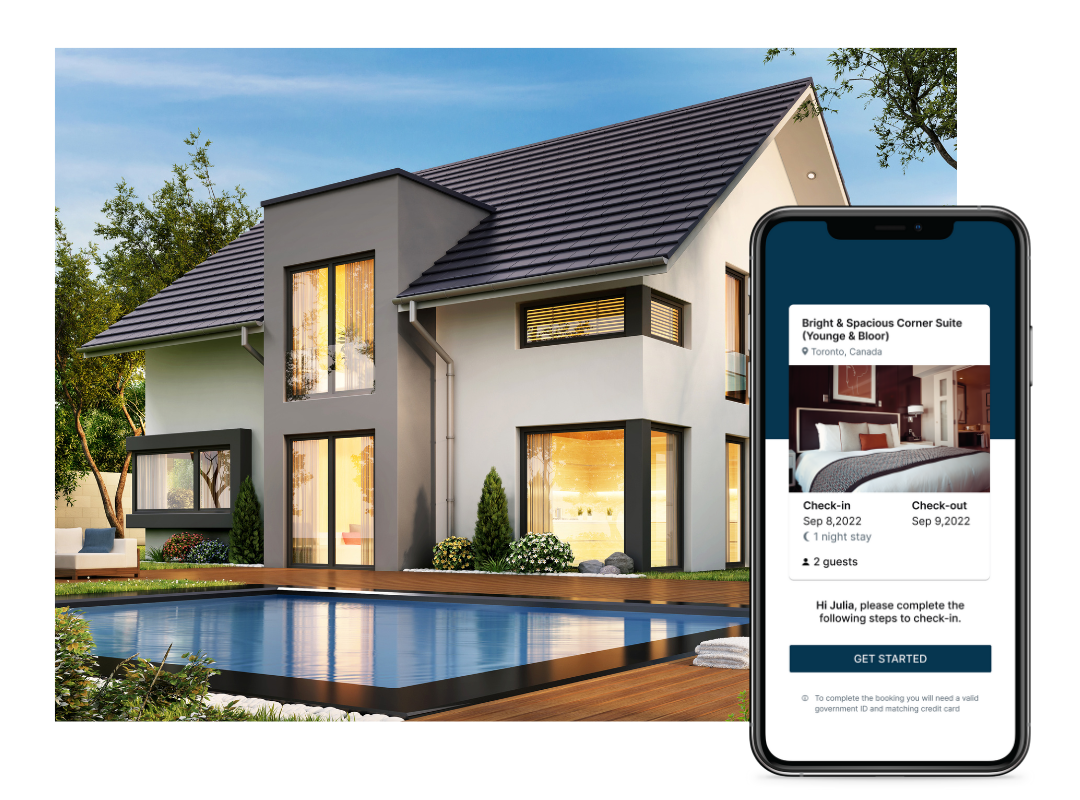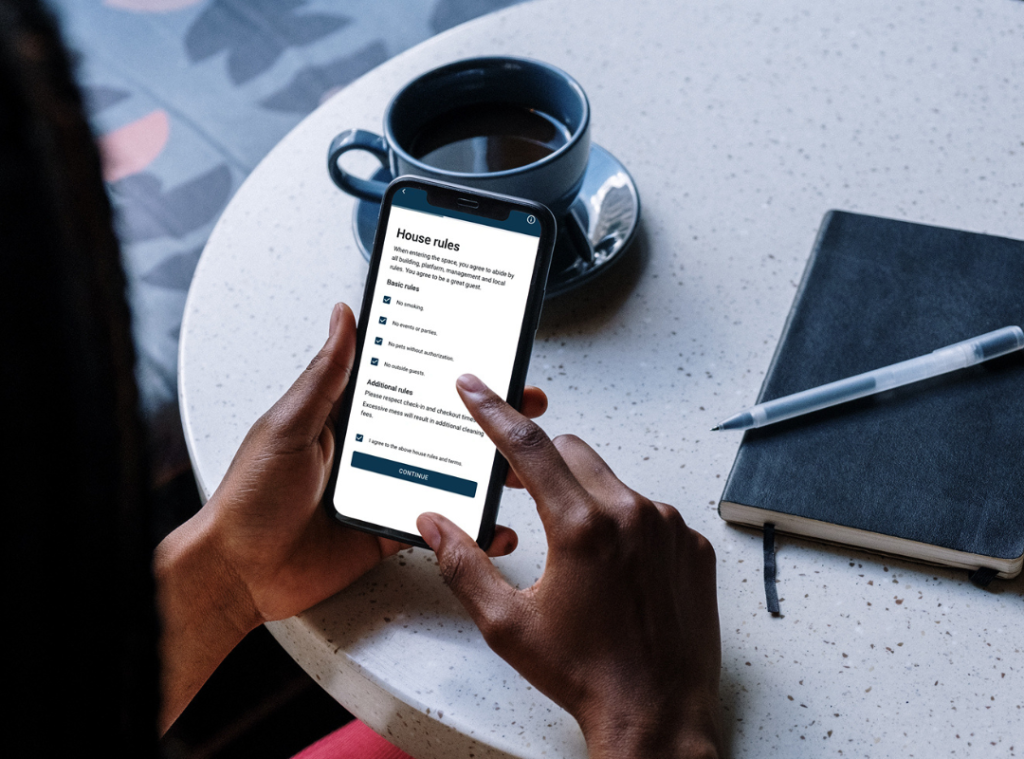Imagine you’re planning a vacation with your family, including your elderly parents who use wheelchairs. You scour the internet for suitable vacation rentals, but many lack the necessary accessibility features.
Frustrating, right?
This scenario is all too common, but it highlights an essential opportunity for vacation rental owners: making properties accessible can significantly broaden your potential guest base and enhance overall satisfaction.
Accessibility in vacation rentals isn’t just a buzzword. It’s a vital component that caters to a diverse group of travelers, including those with physical disabilities, elderly guests, and families with young children. By investing in accessibility, you not only comply with legal requirements but also create an inclusive environment that can set your property apart in a competitive market.
Understanding Accessibility in Vacation Rentals
Accessibility in vacation rentals refers to the design and modification of properties to ensure that everyone, regardless of physical ability, can enjoy a comfortable and convenient stay. This encompasses a wide range of features, from wheelchair ramps and wide doorways to accessible bathrooms and smart home technologies.
Understanding the scope of accessibility needs is crucial. Disabilities come in various forms, including mobility impairments, visual and hearing disabilities, and cognitive impairments. Each of these requires different accommodations. For instance, a guest with mobility issues might need step-free access and roll-in showers, while a visually impaired guest could benefit from high-contrast colors and tactile markers.
Market demand for accessible vacation rentals is on the rise. According to the World Health Organization, over one billion people live with some form of disability. Additionally, as the population ages, more travelers will require accessible accommodations. In the U.S. alone, the number of people aged 65 and older is expected to nearly double by 2060. This growing demographic represents a significant market that vacation rental owners can tap into by offering accessible properties.
Benefits of Accessibility in Vacation Rentals
One of the primary benefits of making your vacation rental accessible is the potential to attract a broader audience. When you provide features like wheelchair ramps, wide doorways, and accessible bathrooms, you open your property to guests who might have otherwise been unable to stay. This inclusivity can lead to more bookings and higher occupancy rates.
Improving accessibility also enhances the overall guest experience. Accessibility features can benefit all guests, not just those with disabilities. For example, step-free access and wide hallways make it easier for families with strollers or travelers with heavy luggage. By prioritizing accessibility, you’re showing all guests that their comfort and convenience are top priorities, which can lead to positive reviews and repeat bookings.
Furthermore, an accessible vacation rental can build a positive reputation for your business. In today’s socially conscious world, travelers appreciate and support businesses that demonstrate inclusivity and social responsibility. By investing in accessibility, you position your property as one that cares about all guests, fostering loyalty and word-of-mouth referrals.
Another critical aspect is compliance with legal requirements, particularly the Americans with Disabilities Act (ADA). The ADA sets forth specific guidelines for making public spaces, including vacation rentals, accessible to individuals with disabilities. By adhering to these requirements, you not only avoid potential legal issues but also create a safer and more welcoming environment for all guests.

Key Features of Wheelchair-Accessible Vacation Rentals
Designing a wheelchair-accessible vacation rental involves several key features that ensure ease of movement and comfort for all guests. First and foremost, consider entrances and exits. Ramps or step-free entries are crucial. Ensure that doorways are wide enough, at least 32 inches, to accommodate wheelchairs. If your property has multiple floors, an elevator or stair lift is essential.
Inside, the layout should be spacious and open. Hallways and pathways need to be at least 36 inches wide, allowing for easy navigation. Furniture placement matters too. Arrange it to provide clear, unobstructed routes. Avoid clutter, as it can be a hindrance for wheelchair users.
Bathrooms are a critical area for accessibility. A roll-in shower, equipped with grab bars and a fold-down seat, makes a significant difference. Install grab bars near the toilet and ensure the sink is accessible, with enough clearance underneath for a wheelchair. A handheld showerhead and non-slip flooring add both safety and convenience.
Kitchens also require thoughtful design.
Lower countertops and accessible appliances ensure that guests can easily prepare meals. Ensure there’s enough clear floor space for maneuvering. Pull-out shelves and drawers can make storage areas more accessible. Consider installing lever handles on faucets, as they are easier to operate than traditional knobs.
In bedrooms, focus on comfort and accessibility. Beds should be at a height that is easy to transfer to and from a wheelchair. Adjustable beds can be a great feature. Ensure there’s ample space around the bed for maneuvering. Light switches, closets, and other amenities should be within easy reach. These features not only accommodate guests with mobility issues but enhance the stay for everyone.
ADA Requirements for Vacation Rentals
Understanding and complying with the Americans with Disabilities Act (ADA) is vital for vacation rental owners. The ADA sets forth specific guidelines to ensure that public accommodations, including vacation rentals, are accessible to individuals with disabilities.
One of the primary requirements is accessible entrances. This includes ramps or lifts where there are steps, and wide doorways. Pathways to these entrances should also be smooth and obstacle-free. Inside, the ADA mandates that hallways and doorways be wide enough to accommodate wheelchairs, with specific measurements to ensure sufficient clearance.
Bathrooms must include features like grab bars in the shower and next to the toilet, roll-in showers, and accessible sinks. These features not only comply with ADA standards but significantly enhance safety and usability for guests with disabilities. Lever handles for faucets and shower controls are recommended because they are easier to use.
Bedrooms and living areas should be designed with enough space to allow wheelchair users to move around comfortably. This might involve removing excess furniture or arranging it to create clear pathways. Light switches, thermostats, and other controls should be placed at accessible heights.
Additionally, the ADA covers communication features for guests with visual or hearing impairments. This can include visual alarms for smoke detectors and doorbells, and telephones with volume control or TTY capabilities.
State and local regulations may have additional requirements beyond the federal ADA guidelines. It’s important to check these regulations to ensure full compliance. Meeting these standards not only avoids potential legal issues but also makes your property more appealing to a broader audience.

Designing Accessible Vacation Rentals
Designing an accessible vacation rental goes beyond just meeting legal requirements; it’s about creating a welcoming and comfortable environment for all guests. Start with universal design principles, which focus on making spaces usable by everyone, regardless of age, disability, or other factors.
When choosing materials, opt for durable, non-slip flooring. Hardwood, tile, or low-pile carpet are good options that make it easier for wheelchairs to move around. Avoid thick rugs or uneven surfaces that can be tripping hazards.
Incorporate smart home technology to enhance accessibility. Voice-activated controls for lights, thermostats, and entertainment systems can be incredibly convenient for guests with limited mobility. Automated door locks and window blinds add another layer of ease and comfort.
Consulting professionals is crucial. Work with architects and designers who specialize in accessibility to ensure that your property meets all necessary standards and provides a truly inclusive experience. They can offer valuable insights into the best practices and innovative solutions for accessibility.
Lighting is another important aspect. Ensure ample, well-placed lighting throughout the property, especially in hallways, stairways, and other potentially hazardous areas. Motion-sensor lights can be particularly useful for guests with visual impairments.
Promoting Accessibility Features to Potential Guests
Once your vacation rental is equipped with accessible features, it’s important to highlight them effectively to attract guests. Start with your listing descriptions. Clearly outline all the accessibility features your property offers. Use phrases like “wheelchair-accessible” and “ADA-compliant” to ensure potential guests know exactly what to expect. Mention specific amenities like roll-in showers, accessible kitchens, and step-free entrances.
High-quality photos and videos can make a big difference. Include images of all accessible features, such as wide doorways, ramps, and accessible bathrooms. Videos can offer a virtual tour, giving guests a clear understanding of the space and how it accommodates their needs. Ensure these visuals are easy to find in your listing.
Communication is key. When guests inquire about your property, be proactive in discussing its accessibility features. Answer any questions they might have and offer detailed explanations to assure them that their needs will be met. This not only builds trust but also helps guests feel more comfortable choosing your rental.
SEO is crucial in promoting your accessible vacation rental. Use keywords like “wheelchair-accessible vacation rentals,” “ADA requirements vacation rentals,” and “accessible vacation rental homes” in your listings and on your website. This improves your visibility in search results, making it easier for potential guests to find you.
Embracing accessibility in your vacation rental is a smart move that opens your property to a wider audience and ensures every guest feels welcome. By understanding and implementing key accessibility features, complying with ADA requirements, and effectively promoting these features, you can create an inclusive and appealing rental experience.





